CakePHP vs Laravel: What to Choose for Web Development
1. Overview
As per w3techs 77.4% of websites on the world wide web are built using PHP or its frameworks, so Tugs-of-war between different backend PHP frameworks have been happening for ages. With the increasing community of developers, people are evangelizing their favorite one and cannot stop discussing. As a result, an unwanted outbreak of technology comparison has taken place between different PHP frameworks such as Laravel vs CakePHP, CodeIgniter vs Laravel, Symfony vs Laravel, Yii vs Laravel – these duels are endless!
The following post emphasizes on Laravel vs CakePHP that tops the charts of popular PHP frameworks and both have a tremendous developer base.
We being reputed Laravel developers in India do offer CakePHP and Laravel development services. So, one of those one-sided articles asserting which PHP framework is best founded on any presumption or sponsorship. Here you will find everything about both Laravel and CakePHP. In the end, you will decide what’s best for you and not us.
2. Laravel Framework
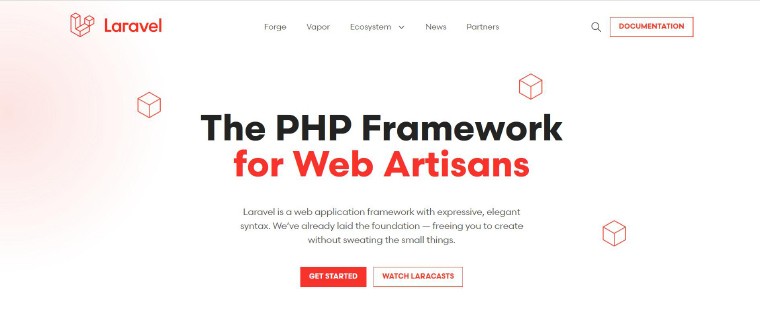
Laravel is server side, open source and easy to learn PHP Framework. Laravel comes with MVC also known as hierarchical Model View Controller, Laravel is considered as one of the most powerful PHP frameworks for app development which helps to increase productivity and provide a wide range of development solutions. Having its architectural model MVC, Laravel developers are able to separate layouts therefore business logics can be made easily.
Being an open-source PHP framework, Laravel offers a wide range of intimidating features leading to the creation of robust web applications. It may quite interest you to know that the Laravel framework leads to immediate deployment, DB query, routing, templating, ORM, and listing all due to the fact that it comprises a vast ecosystem.
Laravel’s recent release is Laravel 9 which is released on Nov 2022.
Key Features of Laravel
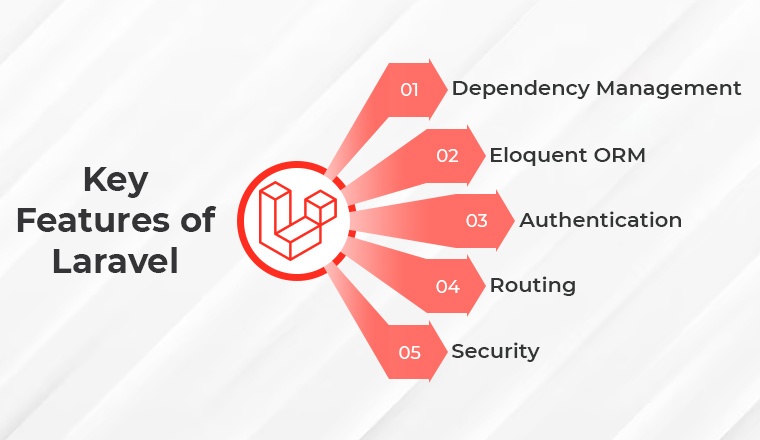
2.1 Dependency management
Being one of the greatest characteristics of the framework in particular, it allows us to learn contemporary web apps so that we can better understand the service container (IoC) functionality. For those who don’t know what is the IoC (convert invert) or service container, one of the strongest instruments used for managing class dependencies.
Dependency injection is what we call removing and injecting hard-coded courses via a composer-like instrument.
2.2 Eloquent ORM
Laravel Framework has support for Eloquent ORM (Object Relational Model) which helps web developers in working with databases. It implements an active record pattern. Below is the visual representation of Eloquent ORM in Laravel.

2.3 Authentication
Out of every contemporary web based application, authentication is a mere component but an important one. Writing authentication to other frameworks such as CodeIgniter can take a lot of your development time in writing. Moreover, Laravel framework offers a box authentication scheme using an easy command.
2.4 Routing
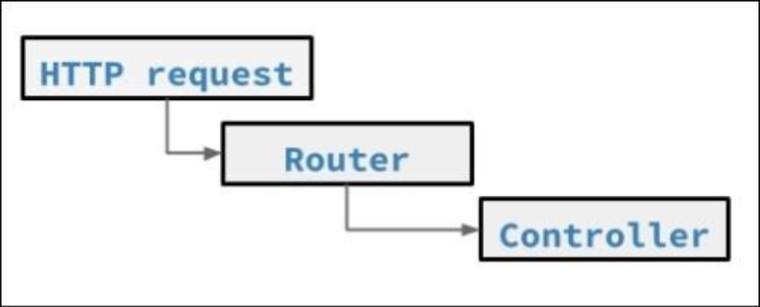
Much like the rail frame of the Ruby, Routing perspective in Laravel development is way simpler to comprehend. This feature can be used for easily creating a restful application. Moreover, you can group, name, filter, and connect your model information to the paths. Last but certainly not least, to create search engines-friendly URLs, its routes can be very flexible and controlled.
2.5 Security

Gone are the days when plain text passwords were a necessity. But it may quite interest you to know that Laravel offers a secure web development environment. Moreover, it saves all the passwords as a hash. By using BCrypt, Laravel offers SQL injection attack safety and also escapes all user entries to prevent script tags from being rejected.
3. CakePHP Framework
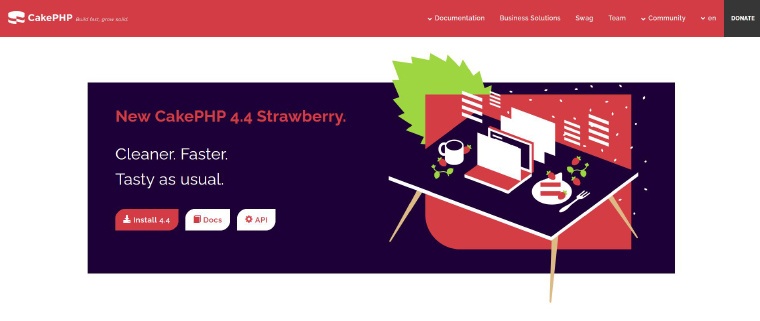
CakePHP is a free, open-source rapid web development framework. It is a PHP based framework that is based on an object oriented model. . When programming any web application, the framework acts as a foundation structure. With this framework, CakePHP developers are able to work in a structured and rapid manner without any loss of flexibility.
It may quite interest you to know that many PHP development companies have agreed that CakePHP takes the monotony out of web development as it eliminates the need for developing web applications right from scratch.
Key Features of CakePHP Framework
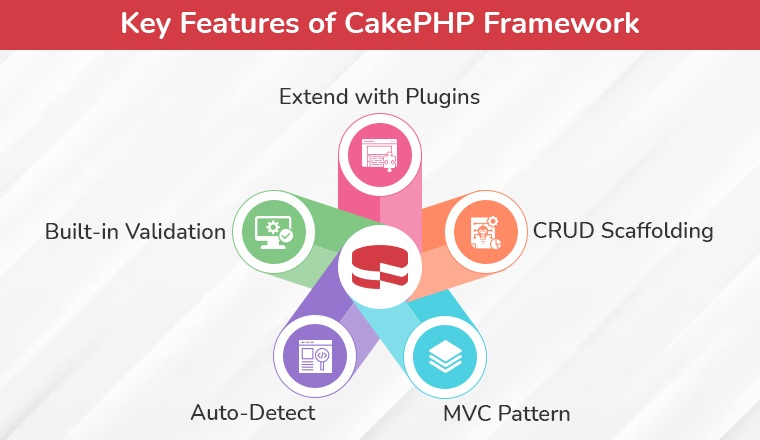
3.1 MVC pattern
As mentioned above, Model-View-Controller (MVC architecture) targets modern programming requirements and with CakePHP, you get to know a unique way of working on various departmental aspects in a vitally planned database model.
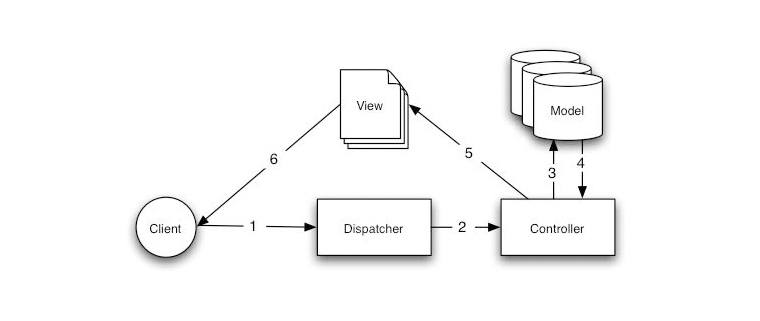
Above image is taken from official CakePHP documentation where you can see CakePHP follows MVC pattern which separates your app in three parts as shown in the image.
3.2 CRUD Scaffolding
CRUD Scaffolding needed to run basic functionalities in databases like Create, Read, Update and Delete. CRUD Scaffolding can help developers in many ways like advanced filters in databases which give you complete control over production dynamics. Even if you are new to the technology you can always take references from GitHub where you can find a plethora of examples related to CRUD Scaffolding.
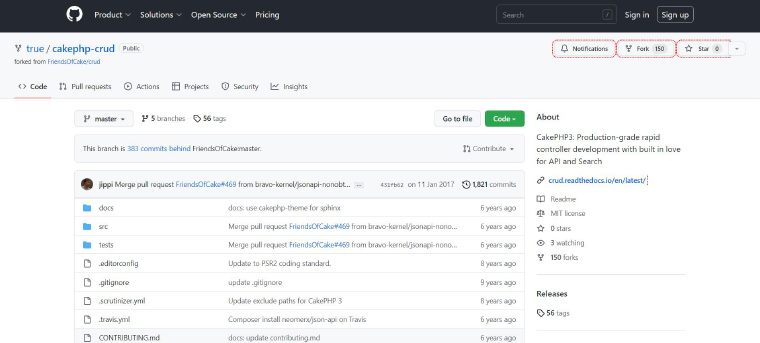
3.3 Built-in Validation
Another interesting feature in particular that allows for the flow of entities, validation methods, and features resulting in easier development.
3.4 Extend with Plugins
Try to hire CakePHP developers who can easily reuse code and build on existing facilities by extending programs with a wide range of new features available in the form of components, behaviors, helpers, and extensions. The new features easily modularized an app for ever-changing requirements.
3.5 Auto-Detect
It may quite interest you to know that CakePHP entirely runs on the Autodetect feature. This means no configuration is required as long as there is a need for any kind of fixing or installation.
4. Laravel vs CakePHP: Key Differences
Before we dig deep into key differences between Laravel and CakePHP, let’s first compare both the frameworks on google trends.
By now one gets to understand the basic concept associated with the Laravel and CakePHP framework. Furthermore, it’s time to spot the difference between both Laravel and CakePHP. Let’s delve into a head to head comparison between CakePHP vs Laravel.
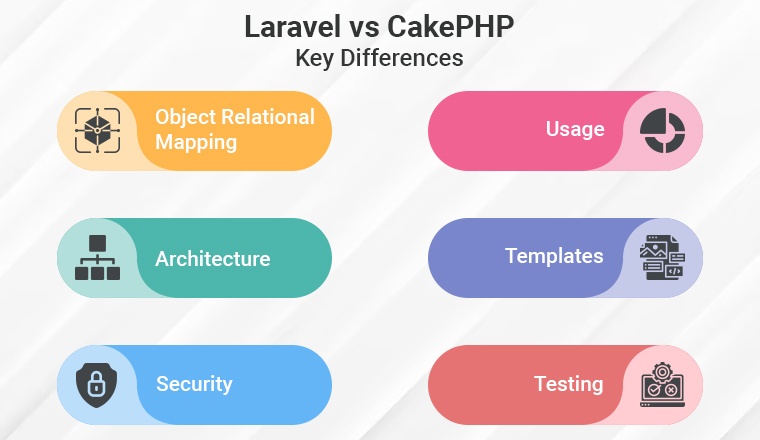
1. Usage
Frameworks like Laravel and CakePHP are available for free. However, you can get started with Laravel without spending a dime. However, you need a license to utilize CakePHP.
With its open-source nature and lack of licensing fees, Laravel has become more popular among developers than CakePHP.
2. Architecture
The MVC framework is used by Laravel. The model, the view, and the controller are the three components that make up the model-view-controller architecture. The application’s data is managed by the model, shown by the view to the audience, queried by the controller (through the view) and modified in response to user input (via the model). Laravel’s two-way data binding enables developers to easily synchronize changes to data across several component classes.
CakePHP employs the HMVC design pattern. To keep an application current, the HMVC framework uses many model-view-controller triads, each of which is responsible for a distinct component. CakePHP takes use of the HMVC architecture to lessen reliance on external resources, boost code reusability, and broaden the scope of the application’s potential use cases.
Laravel’s Model View Controller (MVC) architecture shines in large-scale applications, whereas CakePHP’s View Model View Controller (HMVC) design shines most on personal websites.
3. Templates
Blade, a templating engine, is used by Laravel to create customized page layouts. When developing blade views, developers may utilize standard PHP code to provide a unified look and feel. Blade stores compiled and cached versions of views in the resources/view directory.
CakePHP employs an alternate syntax for controlling output and structures in its templates, which are ordinary PHP files with the ctp suffix. These layouts include the logic to transform the raw data given by the controller into a user-friendly, well-organized display.
On the other hand, CakePHP templates can modify the HMVC structure whereas Laravel’s Blade has no effect on the MVC architecture.
4. Object Relational Mapping
Eloquent ORM is used in both CakePHP and Laravel to construct queries and retrieve data. Thanks to Eloquent ORM, developers can efficiently manage databases.
However, besides Query Builder, Laravel also has Eloquent ORM as an alternative ORM. The results from either ORM are poor.
But CakePHP doesn’t cause any problems with object-relational mapping, so you can count on reliable results every time.
5. Security
Advanced security functionalities, including as hashing, encryption, and decryption, are available in CakePHP. CakePHP also prevents form manipulation, manages blackhole call-backs, and controls cross-controller communication, among other things.
Laravel, on the other hand, just provides the bare minimum in terms of security, such as user authentication, password identification, password reminder and reset, cross-site request forgery prevention, and so on.
As a result, CakePHP provides additional safeguards than Laravel.
6. Testing
Unit testing and feature testing are both available in Laravel. Testing your whole codebase is possible with feature testing, while testing your individual classes, models, and controllers is possible with unit testing.
Unit testing and web testing are both available in CakePHP. Comparatively, web testing facilitates testing for various website components in order to find and fix mistakes, while unit testing enables you to test individual modules of code.
CakePHP and Laravel both have solid testing facilities.
5. Who is the clear winner: Laravel vs CakePHP
We have reached almost the end of the match between Laravel vs CakePHP, by now you must have known what these open source frameworks are all about. Selecting the right PHP framework mainly depends on the project requirements, time of work, and the web development company you choose.
Laravel and CakePHP have their own unique features and limitations that make them favorable in some aspects. On and all, let your natural creativity and curiosity guide you. Other than that, feel free to connect with a reliable CakePHP and Laravel development company like eTatvaSoft that offers the best possible services.
Are you seeking around for frameworks or libraries to conduct a successful front-end development? Well, you will find many but not all of them are...
 Jul 31, 2020
Jul 31, 2020 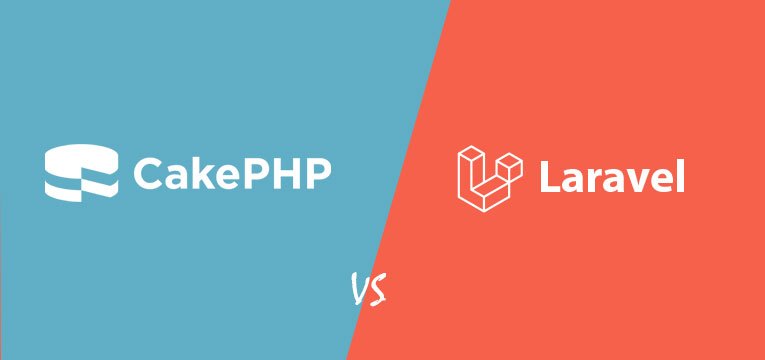
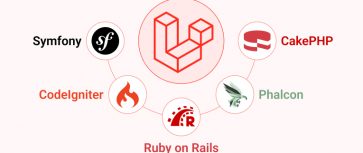


Thank you for sharing a good piece of blogs. I am an avid reader of your technical blogs and really like your art of writing content. Keep posting!
Worth Reading your blog but In my opinion, Laravel is a more robust and secure PHP framework than CakePHP. Even Laravel is considered as one of the topmost web development frameworks while CakePHP is still finding its place to become the prime framework. Overall it's great content!
Both laravel and Cakephp have its own pros and cons. Hence it is recommended to choose according to the priorities and needs of the project.
Nice post! It has detailed comparison over range of factors. Thus, based on the project need any of these frameworks can be selected to reach the desired goal.
Such a nice and clear distinction between Laravel and CakePHP for web development throughout the piece, Thanks.